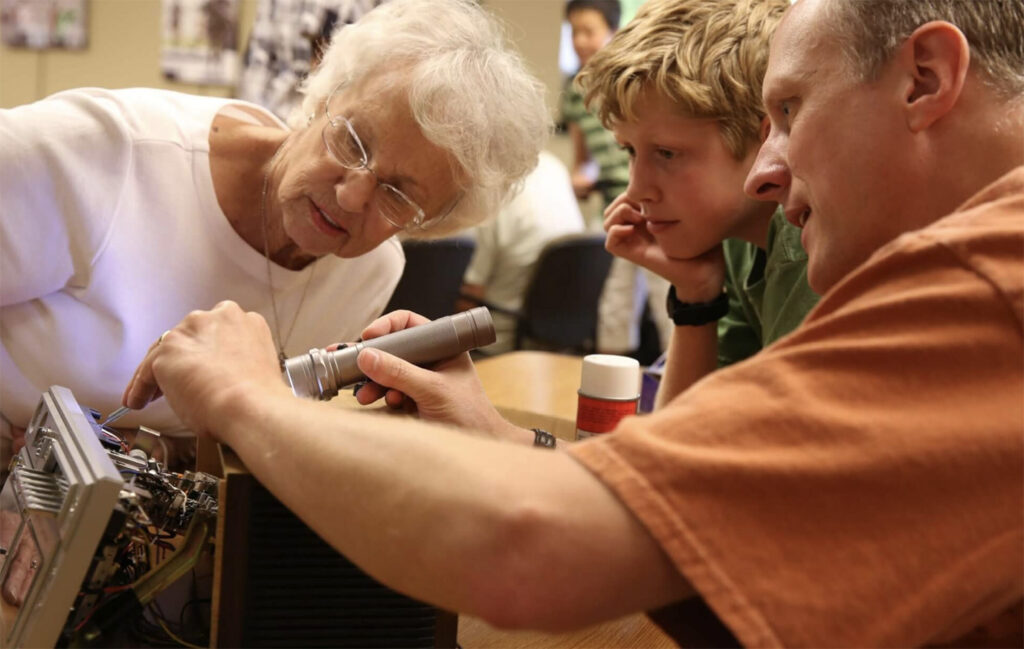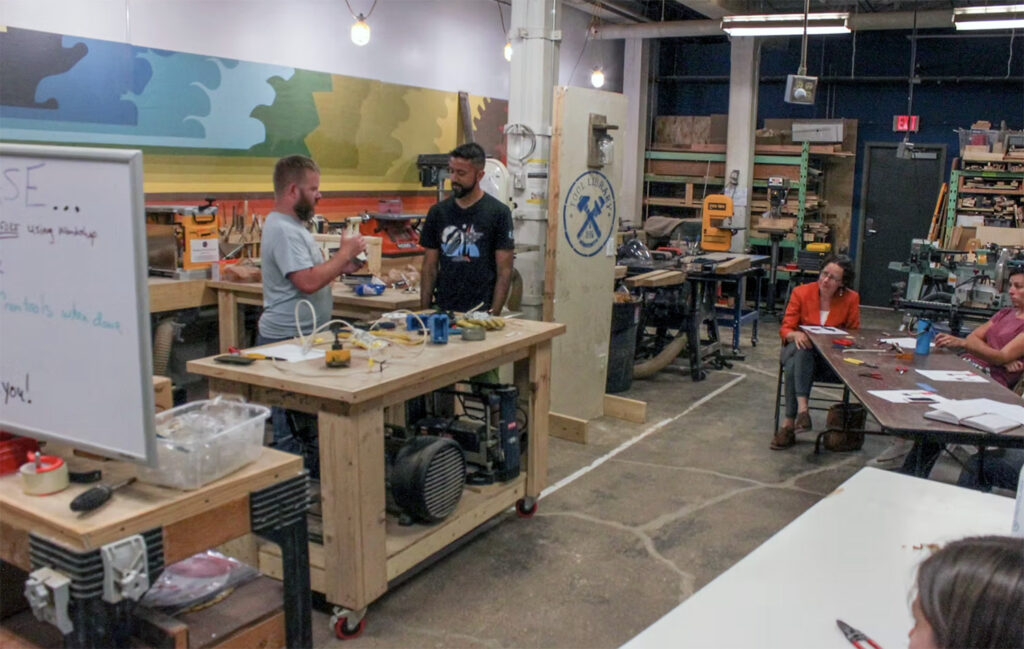By Alliance President Terry Gips and Alliance Communications Coordinator Amy Durr
Enter the vast basketball arena of Eden Prairie Community Center filled with the bustle of people huddled over one table after another, fixing everything from broken umbrellas and vacuum cleaners to torn clothing and all sorts of electronics. This is Hennepin County, MN’s monthly Fix-It Clinic.
Residents can bring any sort of unworkable household item to be repaired for free by expert, patient and kind volunteers – from former engineers to gadget techies. This is the county’s innovative, upstream attempt to reuse and thereby reduce the overwhelming and continually growing amount of solid waste that either will fill up landfills or get incinerated with resultant toxic air pollution.
What You Buy and Repair Can Have a Huge Climate Impact
What we buy has a big impact on the climate, says Hennepin County, and we couldn’t agree more! In fact, at the Alliance we often say that when you make purchases you’re voting with your dollars for the world you want to live in.
Creating new products requires energy to harvest, process, manufacture, and transport materials. In fact, producing and transporting goods is associated with about half of all global greenhouse gas emissions, notes the Hennepin County website. One way to help lessen emissions is to buy less stuff.
But so does not just throwing out non-working household items. Here are just three examples of the huge climate impact you can have by repairing and extending the life of household goods, according to PIRG:
- If our laptops and desktop computers could be made to last one year longer, the amount of pollution eliminated would be equivalent to taking more than 250,000 cars off the road for a year
- Keeping our TVs working one more year would be equivalent to saving the annual electricity use of nearly 500,000 homes
- Extending the life span of printers and copiers by 50% to 6.6 years would be like eliminating 80,707 cars or providing 77,376 homes with electricity
Products Designed to Fail, Starting with Light Bulbs
There’s another wrinkle with voting with our dollars – many items made today are not made to last a lifetime. Instead they’re designed to fall apart or break.
“Since the 1920s, when lightbulb manufacturers teamed up to purposefully limit the life spans of their products, companies have been locked into a business model rooted in the concept of planned obsolescence,” explains the Sierra Club. “To ‘grow,’ at least the way economists define it, corporations have to sell us more stuff every year — which is why there are ever-cheaper products made from low-quality or even toxic materials by people working in unjust conditions.”
“Planned obsolescence is why we see software mysteriously slow down, furniture designed with hollow legs and cheap staples, and clothing burned because it can’t sell fast enough. As repair shops close, landfills expand,” continues the Sierra Club.
With a Bit of Help We Can Surprisingly Learn to Fix Things Ourselves
It’s very frustrating when something stops working and you know it’s likely fixable, but don’t know how. One nifty solution is Fix-It Clinics, like the monthly ones held by Hennepin County.
As Hennepin County shares:
Learning how to repair items is an effective way to produce less waste and conserve the resources that go into manufacturing, packaging, transporting and disposing of goods. But repairing something can feel like a daunting task – you have to know how to take the item apart, find the issue, fix the problem, and put it all back together again.
That’s where Fix-It Clinics come in! Residents at the free clinics get paired up with knowledgeable volunteers who help them disassemble, troubleshoot, and repair their broken household items. For a decade, the clinics have successfully prevented waste and developed repair skills in a collaborative, empowering, and joyful setting.
Check and see if there are any local Fix-It Clinics near you. The national organization, Fixit Clinic, also provides guidance on starting your own clinic if one isn’t available in your area.
Need a Tool to Fix Something and Want to Save Money? Try a Tool Library
It’s great to learn how to repair household items, but repair often requires specialized or expensive tools. If you’re a beginner and don’t have a Grandpa or Father with a garage full of tools, it’s difficult to even begin.
The MN Tool Library has more than 8,000 tools, allowing people who pay a yearly $125 co-op membership to check out everything they need for home-improvement, DIY, lawn & garden, and Pinterest projects. Tools are checked out for a 7-day period and returned to the same location. For those who may have only a one-time need, they hold a monthly free Fix-It Clinic.
In addition to classes, they provide invaluable workshop space, including worktables and large, heavy on-site equipment (like table saws, jointers, and lathes) for member use. And of course, there are plenty of experienced fellow members and staff who are more than willing to show you the ropes.
Best of all, you’ll not only save money and take a giant step towards sustainability by repairing and reusing, but you may become an empowered DIY fixer while getting to know wonderful, caring and committed people who share a desire to have a healthy, thriving future.


